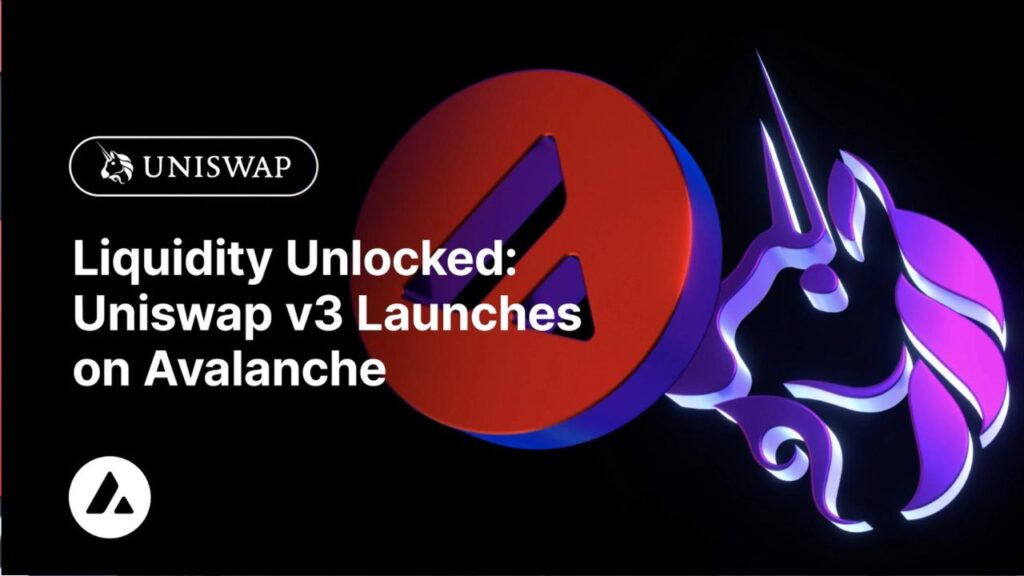Uniswap, a leading decentralized exchange (DEX), has made a major move by launching on the Avalanche network, resulting in a paradigm shift in the decentralized finance (DeFi) space.

Quick facts:
- Uniswap has deployed on the Avalanche network, marking its expansion onto seven distinct blockchain networks as DEX trading volumes surge.
- The DEX faced opposition from a16z in its deployment on the BNB Smart Chain, revealing preferences for its portfolio company LayerZero as the bridging solution.
- Uniswap establishes the Uniswap Bridge Assessment Committee to ensure fair bridge selections for future protocol deployments.
- In Q2 2023, DEX trading volumes reached record highs, with Uniswap leading the market and Curve following.
This strategic deployment comes at a time when DEX trading volumes have skyrocketed, pushing the boundaries of the crypto market and highlighting the growing importance of cross-chain interoperability.
By joining forces, the two have not only embraced each other’s strengths but have also set the stage for a harmonious convergence of liquidity, accessibility, and cross-chain collaboration.
Uniswap, known for its decentralized and user-friendly exchange platform, has officially launched on the Avalanche network, allowing users to swap Avalanche tokens and provide liquidity through the Uniswap Protocol.
The bridge facilitated by LayerZero allows users to effortlessly traverse between Uniswap’s renowned protocol and the Avalanche network, embracing the benefits of both ecosystems. This harmonious blend amplifies liquidity options, empowering traders to explore new frontiers of decentralized trading.
Uniswap is joining more blockchains
UNI launch on the Avalanche network was initially made public in March 2023, and this recent deployment marks Uniswap’s expansion onto a total of seven distinct blockchain networks. The decision to integrate Uniswap V3 with Avalanche garnered overwhelming support from the Uniswap community through a favorable vote.
Uniswap successfully launched on the BNB Smart Chain last week, leveraging Wormhole as the chosen bridging solution for seamless interoperability.
However, venture capital heavyweight Andreessen Horowitz (a16z) voiced its dissent and voted against the deployment, presenting an interesting twist to the story. Subsequently, it was revealed that a16z would have supported the proposal if it had opted for LayerZero, one of its portfolio companies, as the bridging solution.
To address the internal conflict and promote fair decision-making, Uniswap took proactive measures by establishing the Uniswap Bridge Assessment Committee. This committee has been entrusted with the task of evaluating and selecting the most suitable bridges for future deployments.
Currently, the committee is meticulously assessing eight bridges along with three bridge-agnostic solutions, aiming to ensure robust and reliable bridge choices for upcoming deployments.
Looking ahead, UNI is already preparing for its highly anticipated V4 upgrade, which is dependent on the Ethereum Cancun upgrade scheduled for September.
The V4 upgrade is expected to introduce innovative features, including the introduction of “hooks,” enabling developers to build on top of liquidity pools and customize their trading experiences.
DEX Trading Swirls to New Heights
Amidst the buzz surrounding Uniswap’s launch on the Avalanche network, industry analysts have been keenly observing the performance of the DEX market in the second quarter of 2023.
DEX Trading Volume Market Share: Coinmarketcap
The figures reveal that DEXs experienced a remarkable trading volume of $189 billion during this period, with Uniswap emerging as the clear frontrunner. Unsurprisingly, Curve Finance closely followed Uniswap’s dominance in the market, solidifying its position as a significant player in terms of trading volume.
Nevertheless, the trading volume of decentralized exchanges experienced a decline of 24% in comparison to the previous quarter, Q1, where it reached an impressive $249 billion. Centralized exchange (CEX) volumes continue to overshadow DEX volumes, although there has been a noticeable migration towards DEXs following the decline of FTX.
Regulatory Scrutiny and DEX Ploriferation
The steady growth in DEXs’ trading volume can also be attributed to other factors, including the proliferation of new DEX products in the market. As developers continue to introduce innovative DEX platforms, traders have more options to explore and capitalize on the benefits of decentralized trading.
The increased regulatory scrutiny that CEXs are subject to is another factor in the growing popularity of DEXs. As regulators intensify their focus on CEXs, some traders are turning to DEXs as a way to navigate the evolving regulatory landscape and mitigate the potential risks associated with centralized platforms.
This dual effect of more DEX products entering the market and the growing regulatory scrutiny of CEXs has created fertile ground for the steady growth of DEXs, offering traders a viable alternative for decentralized and secure trading experiences.